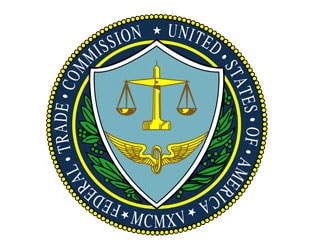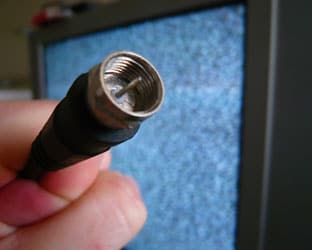 “The FCC is redistributing spectrum, not freeing it,” says Mark Fowler Chairman of the Federal Communications Commission under President Reagan. In an op-ed that ran in the Wall Street Journal 1/24, Fowler says the agency seems to have a bias for broadband and is not considering the benefits of local broadcast TV:
“The FCC is redistributing spectrum, not freeing it,” says Mark Fowler Chairman of the Federal Communications Commission under President Reagan. In an op-ed that ran in the Wall Street Journal 1/24, Fowler says the agency seems to have a bias for broadband and is not considering the benefits of local broadcast TV:
“The agency’s bias for broadband overlooks the benefits of broadcast.
By Mark S. Fowler
For the past five years, the Federal Communications Commission has cheered wireless broadband as the future of communications. But television broadcasters have much of the spectrum that wireless companies want. So the FCC has intervened to reassign chunks of spectrum from one group to another—and its broadband bias comes at the expense of broadcasters.
Television broadcasters already converted more than 25% of their spectrum to digital in 2009. That wasn’t enough to end the so-called shortage. In 2010, the FCC proposed that broadcasters relinquish an additional 120 MHz—20 channels—to be repurposed for broadband. In 2012, Congress authorized the FCC to reallocate the spectrum through a voluntary auction, with the Treasury and the broadcasters sharing in the proceeds.
In December, the new FCC Chairman Tom Wheeler hit the pause button on this effort. Mr. Wheeler did so in part to ensure that the software required to host a complicated, two-sided auction wouldn’t become an iteration of the Healthcare.gov debacle.
But before it proceeds, the FCC needs a more realistic vision of spectrum use that accounts for the public’s benefit from all types of users. Its auction needs rules to recognize spectrum’s different dynamic uses, not just broadband.
The FCC’s preoccupation with wireless broadband has pushed to the side any other use for the spectrum. But the agency’s seeming indifference to TV broadcasting overlooks this medium’s efficiency. Broadcasting uses a point-to-multipoint network architecture, meaning a high-power TV signal is transmitted from one tower and received by many receivers. The service area can span hundreds of square miles.
Cellular service, or broadband, is point-to-point—from one location or person to another. It uses many small antenna sites, with low-power transmitters covering small areas. Broadcasting trounces cellular service in efficiency and reliability. Thanks to its structure, broadcasting can reach millions more people per unit of spectrum bandwidth used.
Broadband fails when the local tower site nearest to the user fails. In a bomb threat at a crowded stadium, broadband service is useless as soon as traffic overwhelms the nearest tower. Should one TV broadcasting station fail, however, many others can provide further advisories in an emergency. Broadcasting kept more than eight million people safe and informed during Hurricane Sandy. Broadband can’t do that.
The turn in FCC policy against broadcasting also discounts the growing audiences for free over-the-air TV. While broadcast TV is mostly viewed through cable and satellite, the annual survey by GfK, the market research institute, reported that nonpay TV households constitute more than 19% of the population, up from 14% two years ago. Centris Marketing Science in October 2013 reported pay TV audiences declined to 83% of the population, amid cord-cutting, booming over-the-air antenna sales and new broadcast DTV channels. FCC rhetoric of “all broadband, all the time,” doesn’t reflect public interest when it comes to licensed spectrum.
The FCC should dispense with its usual spectrum prejudices before the 2015 auction. It should consider technological means that enable a broadcast or cellular licensee to share existing spectrum dynamically when not using it. One such innovation is instant, electronic auctions that align spectrum supply and demand. These services allow someone in Manhattan with AT&T to instantly borrow spectrum from another carrier to complete a call during a peak traffic time. (Disclosure: I’m on the board of a company called Rivada Networks that does just that.) These entrepreneurial solutions are a financial and service win for companies and the FCC alike.
Furthermore, the FCC certainly shouldn’t bow to lobbyists for T-Mobile and Sprint. The two companies, German and Japanese-owned, respectively, are pushing to restrict the amount of spectrum AT&T and Verizon can purchase under the guise of fostering “competition.”
Wireless broadband is a vital service that has transformed the world of communication. But it’s not the only service. Broadcasting remains the primary source of news and information for more than 300 million Americans, and the go-to source when disaster strikes. The two are complementary: Broadband is for personalization; broadcasting is for coverage. The FCC should recognize the differences and put the broadband pompoms down.”
RBR-TVBR observation: Technology is the answer if the Commission can’t free up new spectrum. Fowler brings up a good point with broadcasters and cellular networks able to share spectrum dynamically to allow for increased usage during peak demand. The good news is digital broadcasting is more spectrum-efficient and doesn’t take up as much space to broadcast as analog did. Digital receivers are also much more precise and can allow for more crowding. The bottom line, though, is the current TV broadcasters should be able to keep the spectrum they need to properly serve their viewers and run their operations.





